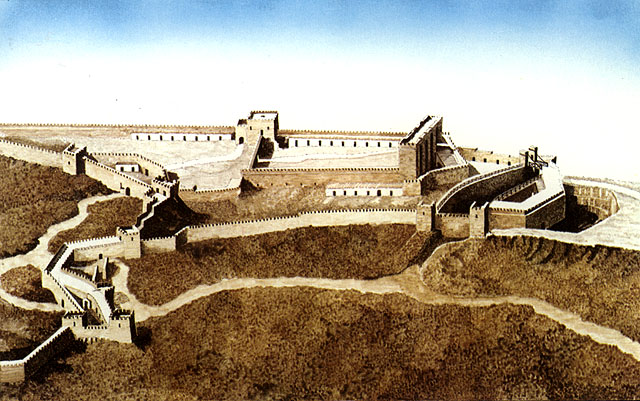As you know, the Greeks (and maybe the Romans) of the Ancient Era were quite prolific in putting artilleries on the walls.
One example that springs to my mind is the fortress of Euryalos connected to the New Wall of Syracuse, on the west side of the Epipolai Plateau. The katapeltikon (arrow projector) and lithobolos (stone projector). Later the Romans called them Catapulta and Ballista respectively. The fortress of Euryalos was built solely for the purpose of having stone projectors and arrow projectors on top of. This held the North of Syracuse safe until 212 BCE when Marcellus invaded it.

Other than Euryalos, there's been many more finds in Greek territories of walled artillery positions. Schramm excavated and analyzed the ruins at Ephyra finding the same. Washer-plates from catapults were found, and the walls were of sufficient width and volume that they were not just meant for soldiers.
What is interesting is that, as we move towards the Middle Ages, it becomes harder to find sources that talk about wall-mounted artilleries.
Can you guys help me find those sources? Can you guys name any sieges during the Middle Ages where the defenders mounted catapults/ trebuchets/ etc. on their walls?
Thank you very much